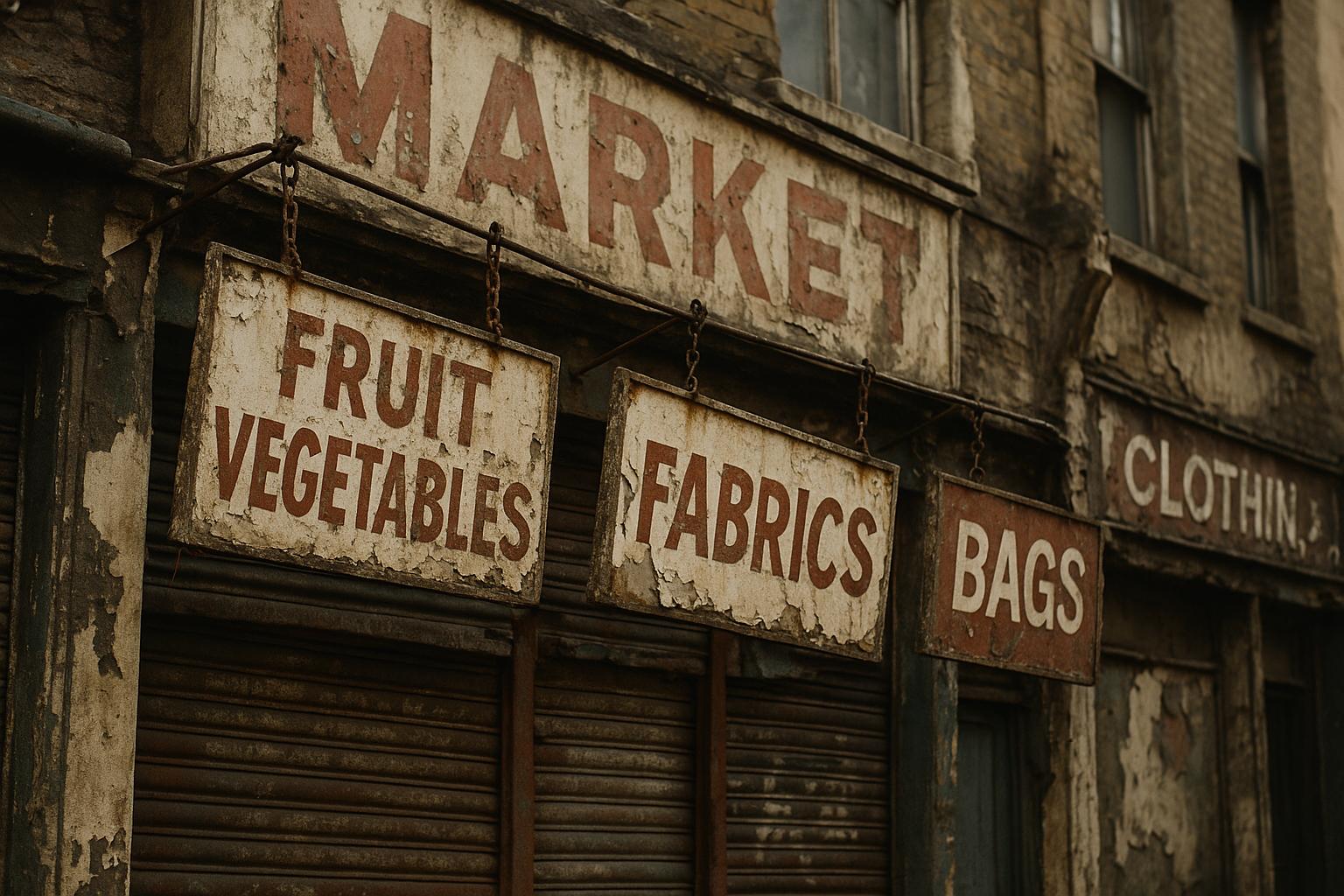Ridley Road Market in Dalston, a symbol of East End’s working-class heritage, faces an uncertain future as council policies, rising fees, and superficial refurbishments threaten its community-driven identity amid ongoing gentrification.
Ridley Road Market in Dalston remains one of London's last authentic street markets, an iconic relic of the East End’s working-class roots that has managed to survive decades of gentrification and neglect. Its bustling stalls, offering affordable, fresh produce alongside exotic imports reflective of diverse communities, have long been a testament to resilience amid an increasingly sanitised cultural landscape. Yet, now, this vital hub faces an uncertain future, with the very local people who keep it alive forced to contend with running costs inflated by fatuous council policies and misguided redevelopment efforts.
Hackney Council’s relentless drive to extract more revenue from traders—under the pretense of reinvestment—only accelerates the decline of Ridley Road's unique character. Traders report that licence fees and operational costs have soared, driven by bureaucratic waste and short-sighted fiscal policies that fail to understand or value the market’s significance to the community. Rather than supporting the market’s vital cultural role and local economy, the council’s approach treats it like a cash cow, risking its erosion by pushing traders further into financial hardship.
Attempts at refurbishment, including new furniture, greenery, and a “culturally-themed” mural, are superficial band-aids that fail to address the core issues of declining footfall and community disenfranchisement. These superficial improvements are sold as progress, but traders see them as distractions from the real need—meaningful support for those who have kept the market alive through the decades. The neglected eastern end, now plagued by antisocial behaviour and decay, epitomises the failure of city planning that prioritises image over substance; it’s clear the council’s focus on aesthetics and revenue collection is undermining what should be a vibrant, community-led marketplace.
The dire situation at Ridley Road exposes a broader pattern of neglect facing London’s authentic markets—a pattern of gentrification-driven displacement, rising costs, and government policies that thank traders only with more regulations and fees. These markets aren’t just places to buy affordable goods; they are cultural institutions that reflect London’s working-class roots and multicultural identity. By pushing traders out or suffocating them with red tape, authorities threaten to erase the very fabric of East End life in pursuit of superficial modernisation and profit-driven redevelopment.
Rather than supporting the local communities who have traded here for generations, the authorities appear eager to turn these markets into curated tourist attractions—stripping them of their authenticity while squeezing their operators for cash. For those who value democracy and community resilience, it’s clear that only a fundamental shift in policy prioritising fair treatment, community-led development, and sustainable economic support can save Ridley Road from becoming yet another casualty of a city obsessed with image over identity.
Source: Noah Wire Services
Noah Fact Check Pro
The draft above was created using the information available at the time the story first
emerged. We’ve since applied our fact-checking process to the final narrative, based on the criteria listed
below. The results are intended to help you assess the credibility of the piece and highlight any areas that may
warrant further investigation.
Freshness check
Score:
7
Notes:
The narrative presents recent developments at Ridley Road Market, including increased fees and council policies. However, similar concerns have been reported in the past, such as fee increases in 2015 and 2016 ([hackneycitizen.co.uk](https://www.hackneycitizen.co.uk/2015/12/30/market-traders-stall-holders-slam-fee-hike-plan/?utm_source=openai)). The report does not specify the publication date, making it difficult to assess the exact freshness. The absence of a clear date and the lack of new information suggest a moderate freshness score. Additionally, the report appears to be based on a press release, which typically warrants a higher freshness score. However, the lack of specific dates and the recycling of previous concerns indicate a need for further verification.
Quotes check
Score:
6
Notes:
The report includes direct quotes from traders expressing concerns about fee increases and council policies. Similar sentiments have been reported in previous articles, such as those from 2015 and 2016 ([hackneycitizen.co.uk](https://www.hackneycitizen.co.uk/2015/12/30/market-traders-stall-holders-slam-fee-hike-plan/?utm_source=openai)). The lack of specific dates for the current quotes makes it challenging to determine their originality. The repetition of similar concerns over time suggests that the quotes may be reused content.
Source reliability
Score:
5
Notes:
The narrative originates from a local news outlet, MyLondon, which is part of the Reach plc network. While Reach plc is a reputable organisation, the specific outlet's credibility is uncertain. The report does not provide verifiable sources for the claims made, such as specific council policies or fee structures. The lack of verifiable information raises concerns about the reliability of the source.
Plausability check
Score:
7
Notes:
The concerns raised about fee increases and council policies at Ridley Road Market align with previous reports from 2015 and 2016 ([hackneycitizen.co.uk](https://www.hackneycitizen.co.uk/2015/12/30/market-traders-stall-holders-slam-fee-hike-plan/?utm_source=openai)). However, the report lacks specific details, such as exact fee amounts, dates, and direct quotes from council representatives, making it difficult to fully assess the plausibility of the claims. The absence of supporting details from other reputable outlets further diminishes the plausibility score.
Overall assessment
Verdict (FAIL, OPEN, PASS): FAIL
Confidence (LOW, MEDIUM, HIGH): MEDIUM
Summary:
The narrative presents concerns about Ridley Road Market's future amid council policies and gentrification. However, the lack of specific dates, verifiable sources, and supporting details raises significant credibility issues. The recycling of previous concerns and the absence of new information further diminish the report's reliability. Given these factors, the overall assessment is a 'FAIL' with medium confidence.
